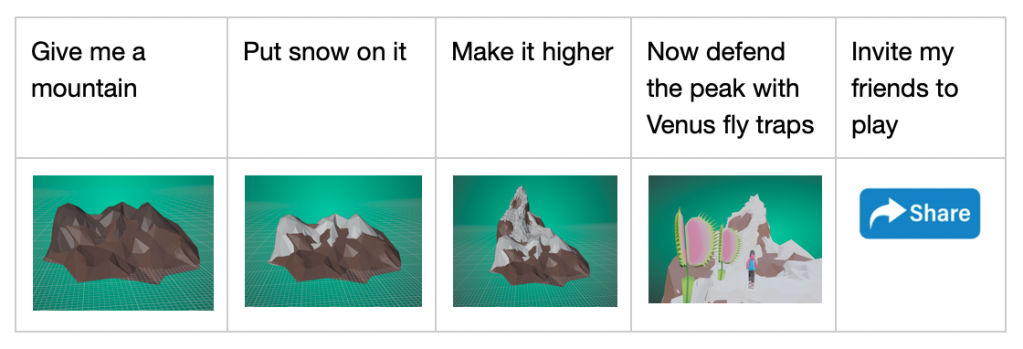My son is screaming – literally screaming from the downstairs room. It’s mid-pandemic and the house is usually pretty quiet. We kind of sulk around because we don’t go out of the house and we’ve seen way too much of each other. But he’s down there and he’s screaming. So I run downstairs and into the TV room. He’s on the couch with his iPad in his hands and my old laptop on an end-table running FaceTime. All of his friends are there. He’s screaming. They’re screaming. They’re playing AmongUs.
And it clicks with me. This isn’t a game. I mean, it is a game. But mostly, they’re hanging out together. They’re spending time with each other, becoming better friends, having a good time, and losing their voices with the excitement of it all.
I smiled. Although I needed to get my earplugs, I was happy. Happy that my son had found a way to connect with friends, even in the midst of a pandemic.
As a kind of life philosophy, I believe that when we love something, we should take it apart and see if we can rebuild it. And so I encouraged my son to do the same with gaming. He didn’t need much goading because he really really wanted to make his own games. He had elaborate visions of robot kingdoms, floating islands, and water worlds. I enrolled him in a coding class for kids, with a great instructor named Zach.

A would be robot king? (created with a prompt in Midjourney)
And while Zach was amazing, they were both up against a game-making experience that looked like this:

That’s a screenshot from Roblox studio, where learning the coding language Lua is a prerequisite to creating a game. My son is a bright kid, but he’s also 11. After six months of grind and valiant effort, his water world visions dried up.
This experience got my mind churning about what a game making platform might look like if it were simple enough for a novice to use, but flexible enough to enable infinite scenarios. I’d worked on a number of games in the Flash era and spent a good deal of time with Unity, so was familiar with the landscape, but I was looking for something quite different.
And then, boom! LLMs and diffusion models were suddenly capable of magic. I’d been using LLMs since 2018 for my work, but the models of 2022 were something different. As is now widely known, they were now capable of creating beautiful imagery, human-like reasoning, and creative writing. This was it. This was what I was looking for to solve the game making problem. These types of AI models would enable a new era in game making.
I imagined a scenario where my son could say:

This is the future of game making. But not only game making. This is the future of how people (kids especially) spend time with each other when they can’t physically be together. This is our modern-day 3rd place.
My conviction is that this third place should enable us to feel successful about ourselves as both creators and consumers. It should be creative and bubbling with positivity. We should feel good about being there.
I believe that when we make our own games – when we shape the space in which we spend time with our friends – that we will see an explosion in games. In fact, we’ll see a shift in both the nature and role of gaming in our lives.
Imagine games that reflect something that happened recently, like a funny shared joke that happened at school that week. Or a reader’s journey into the world of her favorite book. Or perhaps an exploration of a previous era whether it be dinosaurs or railcar riding across the great plains. These will be different kinds of experiences than we see in games today. They may be created for a global audience, but may just as easily be created for a small group of friends.
The closest parallel is what happened with photography through the 90s until today. When digital cameras and mobile phones moved photo-making from the dark room to the palm of your hand, it resulted in an explosion in the number of photographs. Look at this graph!

Number of photos taken by year. Source: https://www.researchgate.net/publication/341752648_From_Monetary_to_Nonmonetary_Society
But it’s not just that all of a sudden we had more photographs floating around. The very nature and essence of “the photograph” shifted. Each image went from being a precious gem to an ephemeral experience: from a weighty frame of film to a temporary indulgence. We went from carefully preparing and considering each frame to machine-gun selfie mode.
We are at the very beginning of this same exponential curve. 20 years after photographs were democratized, games will follow the same pattern. What is now precious will soon become a space for us to enjoy for a while. This shift doesn’t mean that pro studios won’t still spend millions of dollars creating top-end games for top-dollar. Just as high-end photographers are still paid handsomely for pro shoots. But it means that these top-end productions will exist in a sea of games that is much wider and much different in meaning to the average individual. It means that our relationship to the “game” will change.
The average “gamer” spends ~$1000/year on games today. But the average gamer of tomorrow won’t look at all like the gamer of today. When the definition of what a “game” is shifts, my bet is that we all become gamers: just as we all became photographers and touch-up artists. The economic expansion will be as profound.
I can’t wait to see what it looks like. I hope you’ll join me on this adventure.
-ben rigby
may 16, 2023


Leave a comment